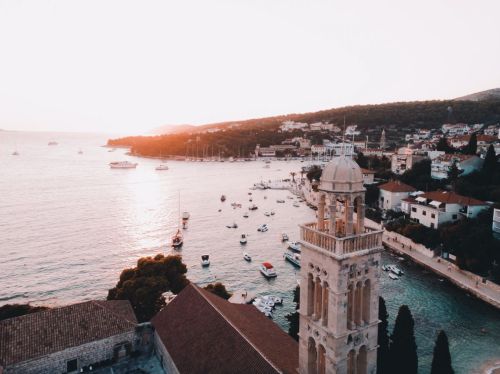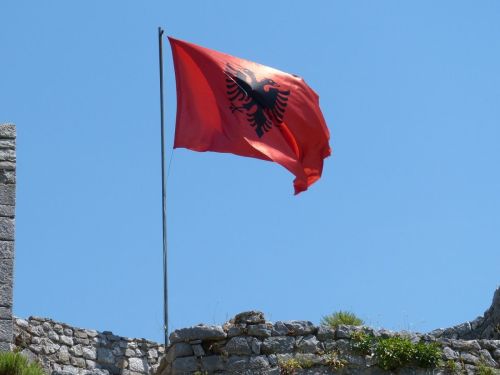Portugal is a relatively small country on the western edge of Europe. For years, this country has been attracting tourists from all over the world with its numerous architectural monuments, wonderful beaches, beautiful landscapes and scenic routes, wine, fado, and finally the world-famous place of worship of Our Lady of Fátima.
Its territory also includes the Atlantic archipelagos of the Azores and Madeira.
The Azores are an archipelago of nine volcanic islands in the Macaronesian region, located in the central Atlantic Ocean. It is located approximately 1500 km from the coast of the Iberian Peninsula. The archipelago is a seismically active area.
Madeira is a Portuguese volcanic archipelago in the Atlantic Ocean located off the northern coast of Africa. It is situated 860 km south-west of mainland Portugal. The last laurel trees growing in Madeira have been included on the UNESCO World Cultural and Natural Heritage List.
Both of these archipelagos constitute autonomous regions with their regional governments.
It borders the Atlantic Ocean to the west and south, and Spain to the north and east - the only country that has a land border with Portugal.
It has existed as an independent state since 1139. Its borders were marked in 1270 and have not changed since then. Therefore, the Portuguese border is the oldest borderline in Europe.
The increase in the number of inhabitants is due to immigrants, mainly from Brazil, Ukraine, Cape Verde, Romania, Angola, and Guinea-Bissau.
More than 96% of the country's population is of Portuguese origin, and the official language is Portuguese.
The largest Portuguese diaspora is in Paris.
It is also the largest city in the country, located in the western part of the Iberian Peninsula, on the Tagus River at its mouth into the Atlantic Ocean.
The city is the political, economic, and cultural center of the country. The Lisbon region is the richest region in Portugal. In studies on the quality of life, Lisbon was ranked 7th among the world's cities in 2017. It was recognized as the Green Capital of Europe 2020.
There are two UNESCO World Heritage Sites in the city: the Jerónimos Monastery and Torre de Belem, and within the metropolitan area, there is a third site - Sintra with its cultural landscape.
The territory was inhabited by pre-Celtic and Celtic peoples, visited by the Phoenicians, Carthaginians, ancient Greeks, and ruled by the Romans, followed by invasions by the Suebi and Visigoths. After the Moorish invasion of the Iberian Peninsula, most of its territory was part of Al-Andalus - a Muslim-ruled territory in the Iberian Peninsula.
Founded in 868, the country of Portugal gained importance after the Battle of São Mamede (1128). The Kingdom of Portugal was proclaimed after the Battle of Ourique in 1139, and independence from the Kingdom of León was recognized by the Treaty of Zamora in 1143.
Portugal was at the forefront of European world exploration and the Age of Discovery. The main sponsor and patron of this project was Prince Henry the Navigator, son of John I, King of Portugal. During this time, Portugal discovered the Atlantic archipelagos of the Azores, Madeira, and the Cape Verde Islands, colonized selected areas of Africa, discovered the eastern route to India through the Cape of Good Hope, Brazil, established trade routes across most of southern Asia, and sent the first direct European trade and diplomatic missions to China and Japan. There are speculations that it was the Portuguese, not the Spanish, who discovered Australia in 1521.
The newly discovered lands outside Europe were divided between the Portuguese Empire and the Spanish Empire. Through military campaigns, Portugal expanded its empire in Asia.
It was the Lisbon earthquake in 1755, the occupation of the country during the Napoleonic Wars, the independence of Brazil in 1822, and the civil war over the royal succession. The 1910 revolution overthrew the monarchy in Portugal, establishing the democratic but unstable First Portuguese Republic, later replaced by the authoritarian Estado Novo regime.
Soon after, almost all overseas territories gained independence. The handover of Macau to China in 1999 marked the end of one of the longest-running colonial empires in history.
The legacy of this is approximately 250 million Portuguese speakers and many Creole languages based on Portuguese.
Currently, Portuguese is the official language of 9 countries in the world.
Mainland Portugal (most Portuguese call the Iberian Peninsula a continent) is divided by the main river Tagus, which flows from Spain and joins the Atlantic Ocean in Lisbon. The northern part of the country is mountainous, then turns into plateaus crossed by river valleys, and in the south (Algarve and Alentejo regions) it is characterized by plains.
This ancient volcano with a height of 2351 m above sea level is the symbol of the Azores.
The highest peak on the continent is Serra da Estrela (1991 m above sea level). It is an important seasonal attraction for skiers and winter sports enthusiasts.
This is a maritime zone in which the Portuguese have special rights to explore and exploit marine resources. It covers 1.727.408 square kilometers.
There are six terrestrial ecoregions:
It includes 62 special nature protection areas and 88 types of protected landscape natural habitats.
71% of the forested area of continental Portugal is made up of eucalyptus trees and cork oaks. In Madeira, laurel dominates the landscape.
In Madeira it is 36% and in the Azores - 70%.
In 2019, out of 172 countries in the world, Portugal ranked 168th in the Forest Landscape Integrity Index.
Due to their isolated location, the volcanic islands of the Azores and Madeira have many endemic species.
There are five endemic bird species there: the Madeiran pigeon, the Madeiran petrel, the Madeiran firefly, the Azores firefly, and the Azores bullfinch.
Compulsory education lasts nine years, i.e. from the age of 6 to 15. Primary school is compulsory, universal, free, and uniform. It lasts nine years. Various teaching and organizational solutions are used in education, such as television education at the primary school level and parallel education, i.e. the possibility of learning in a day, evening, or television school at the secondary school level.
They are found in the south of the country, where, next to golden sand, temperatures usually do not fall below 15 degrees C. The Portuguese Algarve region won the title of "Europe's Leading Beach Destination" in 2020, awarded in the prestigious World Travel Awards competition. Algarve turned out to be better than French Cannes, Greek Corfu, Spanish Majorca and Marbella, and Turkish Oludeniz.
It is also one of the most popular surfing spots, which can be enjoyed all year round.
They are extremely aromatic, although smaller than those from South America or Hawaii. They grow in special greenhouses made of wood and glass. Most plantations are located in Faja de Baixo on the outskirts of Ponte Delgada.
The network of hiking trails in the western and southern parts of the country - Rota Vicentina has been awarded the European quality certificate "Leading Quality Trails - Best of Europe", which is awarded to the best tourist trails in Europe. The beauty of the landscape and local natural and cultural attractions were taken into account: waterfalls, caves, gorges, castles, historical buildings, etc.
So far, several routes have been awarded this certificate, including Denmark, Germany, Austria, Luxembourg, and Greece.
This is the cape of Cabo de Roca located within the Sintra-Cascais Natural Park, west of Lisbon. The shore on the cape is rocky and rises 144 m above the level of the Atlantic Ocean. There is a lighthouse from the 19th century on the cape.
This is the Vasco da Gama Bridge, which connects the bank of the Tagus River near Lisbon (in Sacavem) with the town of Montijo on the other side of the river. Its length is 17.2 km.
Livraria Bertrand in Baixa Chiado, founded by Pedro Faure, has been operating continuously since 1732.
It was the only institution of this type in the country until the beginning of the 20th century. It was founded in 1290 as a study generale (a name given in the Middle Ages to some schools of international importance) by Denis of Portugal, the Farmer King (the sixth king of Portugal from 1279). The university was initially located in Lisbon, but as a result of a conflict between the city's inhabitants and the academic community, the university was moved to its current location in 1308. In 2013, the university was included on the UNESCO World Heritage List.
This alliance was ratified in the Treaty of Windsor in 1386. Since the signing of the treaty, the Kingdom of Portugal and the Kingdom of England have never been at war with each other or engaged in wars on opposing sides as independent states.
Today, Portugal and the UK are joint members of NATO.
It took place on November 1, 1755, at 9:40 in the morning. It left Lisbon almost completely ruined and most of the southern coast, up to the Algarve, destroyed. Immediately after the earthquake, there was a tsunami, the waves of which could reach a height of up to 20 m. Hundreds of fires also raged in the areas affected by the disaster. The disaster cost lives of 10.000 to 40.000 people in Lisbon alone. The strength of the quake was so great (9 on the Richter scale) that it was also felt by the inhabitants of Venice, as Giacomo Casanova noted in his memoirs.
It is located in the Park of Nations in Lisbon, which was created after the Expo'98 exhibition. The capacity of the oceanarium is 5000 cubic meters or over 5.000.000 liters of water. It is made up of a huge water reservoir with walls full of glass. It is surrounded by four two-story sections, each displaying the flora and fauna of a different ocean. You can admire the life and environment of the Pacific, Atlantic, Indian, and Arctic Oceans. The Lisbon Oceanarium has over 16.000 animals from 450 species.
In 2007, The Economist described Portugal as "the sick man of Europe".
This is due to the Sanctuary of Our Lady of Fátima, which is located in west-central Portugal, in the city of Fatima. The sanctuary was built on the site of the apparitions of Our Lady, which began on May 13 and lasted until October 13, 1917. In 2017, 9.4 million pilgrims came to Fatima to celebrate the centenary of the apparitions of Our Lady.
Nine of them are architectural monuments and two are wine-growing regions.
Vineyards cover almost 200.000 ha (9th place in the world), which produce an average of 6 million hectoliters of wine per year (11th place). The Portuguese themselves drink a lot of wine, and they export almost 3 million hectoliters.












